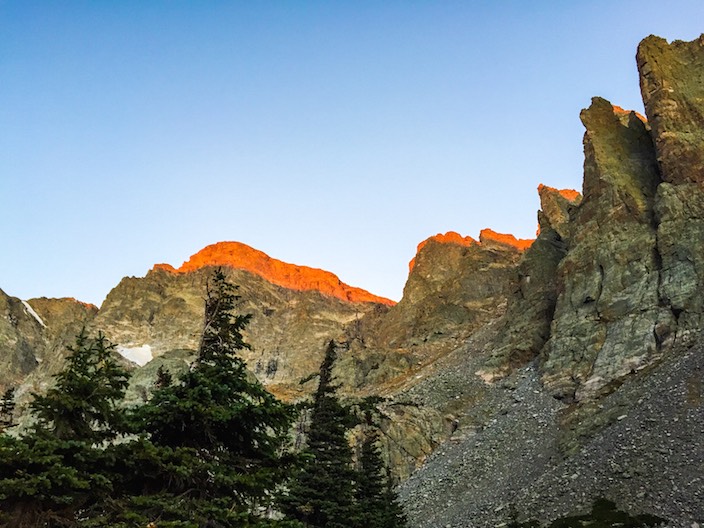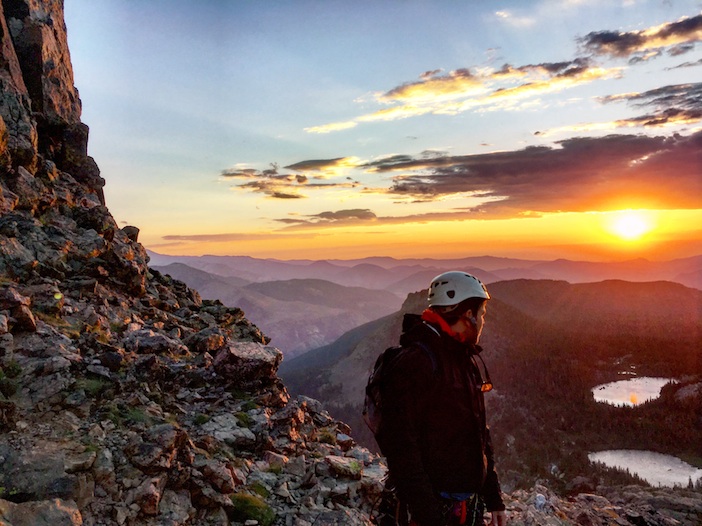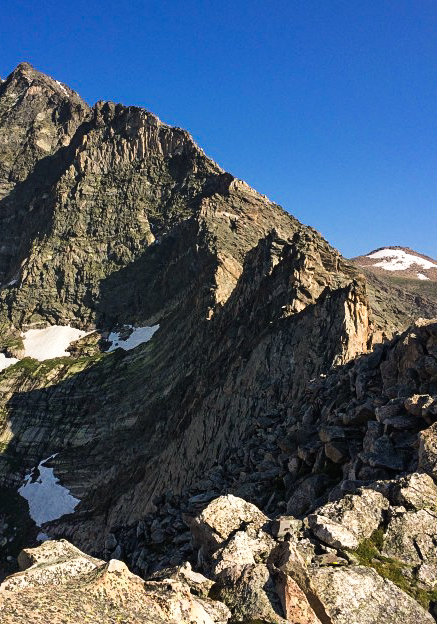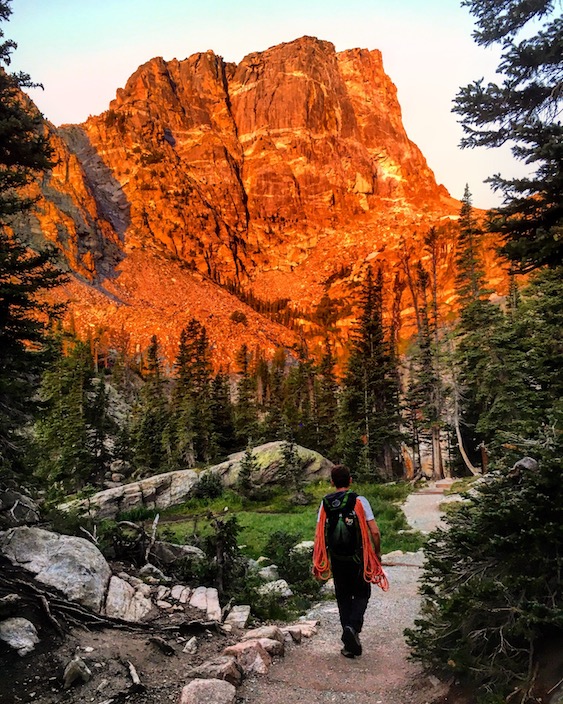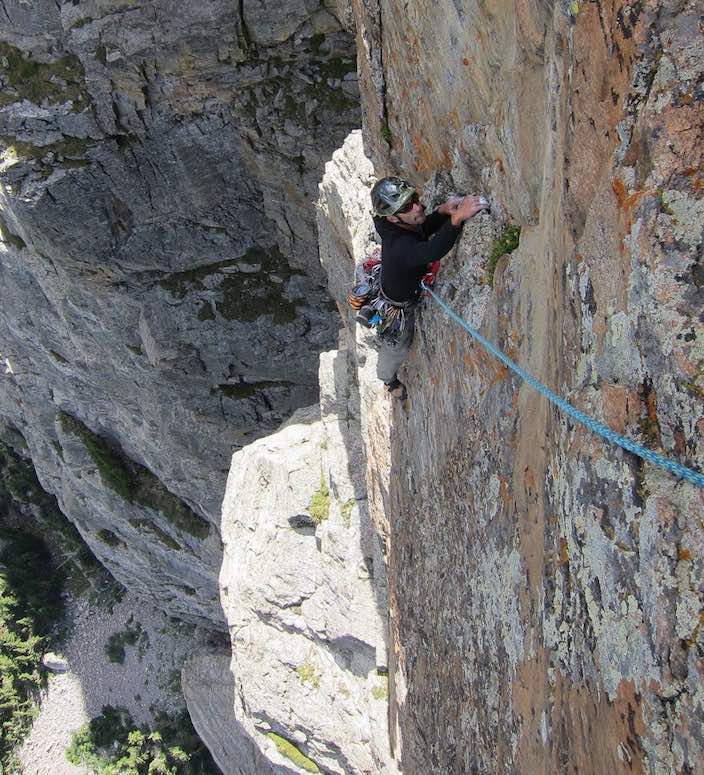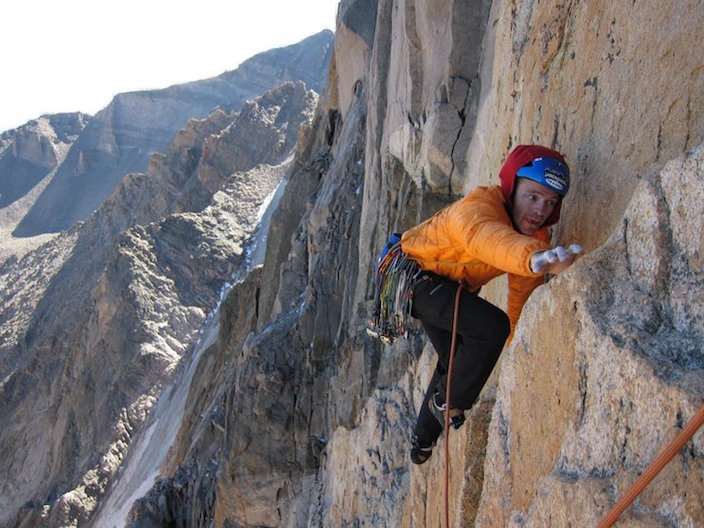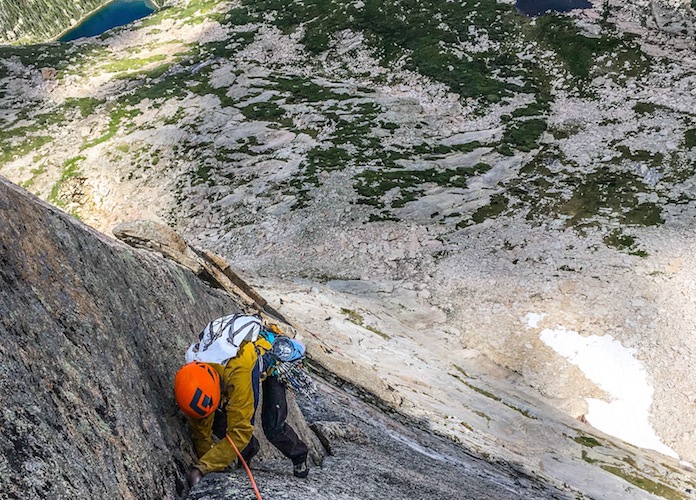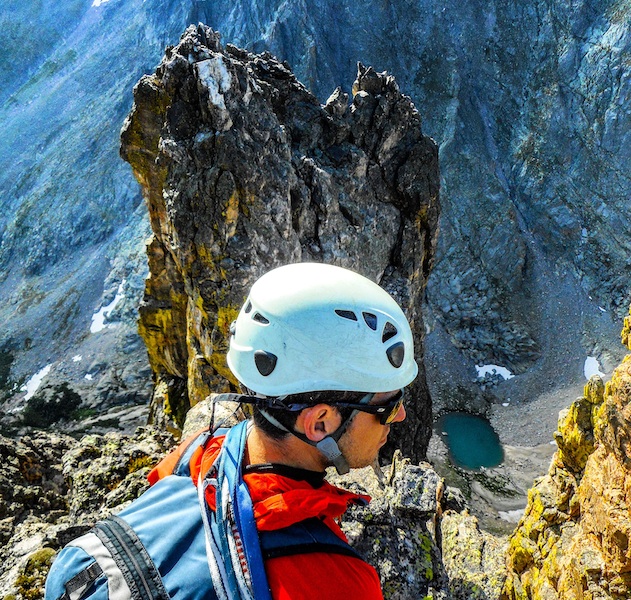Climbing in Rocky Mountain National Park
Overview
Rocky Mountain National Park (RMNP) offers climbers an astonishing variety of routes, ranging from beginner-friendly cragging to alpine rock-climbs and mixed climbs on a grand scale. Climbs like The Casual Route (IV, 5.10a) on the Diamond of Longs Peak and the South Face of the Petit Grepon (III, 5.8) are among the most classic and best-known rock climbs in the United States, with steep rock and challenging moves sometimes at altitudes of twelve thousand feet or more.
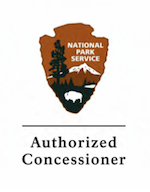
Historically, the Colorado front range was the scene of major advances in North American mountaineering. From about 1916 into the late 1920's, Colorado was home to the hardest rock climbs in the country. The Colorado College professor Albert Ellingwood (a Rhodes Scholar who had climbed in England's Lake District) and Eleanor Davis were probably the first people to practice belayed climbing in the United States. Their 1916 and 1925 ascents of Crestone Needle were pioneering rock climbs that set new technical standards in the United States.
In 1927, Joe and Paul Stettner, working-class German immigrants living in Chicago, upped the ante with their bold climb of Stettner's Ledges on the East Face of Longs Peak. At 5.8, with sustained technical difficulties by the standards of the day, the climb was considered the hardest in the country until surpassed in 1931 with the first ascent of the North Ridge of the Grand Teton.
Closer to Denver, the Boulder Rock Climbing scene saw major technical advances at the hands of legendary hardmen like Layton Kor and Pat Ament during the golden age of American rock climbing in the early 1960s. Many of their pioneering routes are still among the finest and most popular climbs in Colorado, enduring over decades of changing standards and techniques.
Climbing Season
We offer climbing in Rocky Mountain National Park year-round, with the prime rock climbing seasons being spring, summer, and fall - approximately late March through early November. Waterfall ice climbing and winter mixed alpine climbing is available November through February.
Guided Climbing
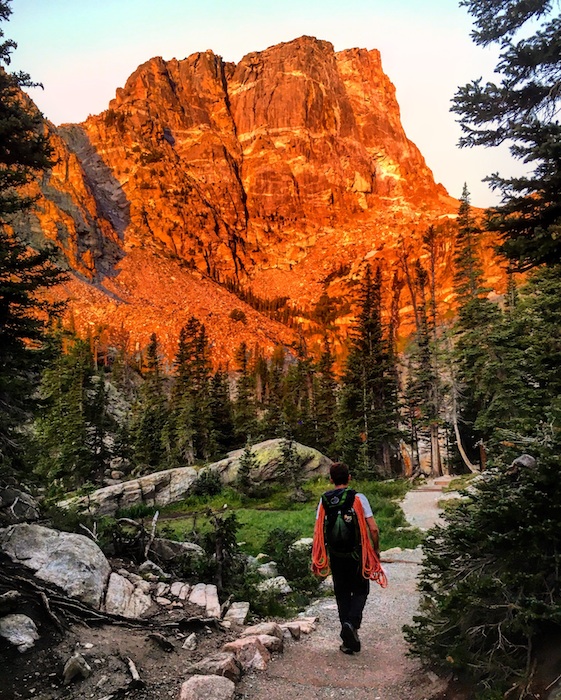
Approaching the North Face of Hallet Peak with spectacular alpenglow from the sunrise. Hallet Peak is one of RMNP's most accessible alpine walls and offers several routes at a moderate rating. Zach Lovell
Today, climbers can choose among many options in Rocky Mountain NP, including:
- Front-country rock-climbing at Lumpy Ridge, just outside Estes Park; and
- Classic alpine rock climbs on the high summits, like the Diamond on Longs Peak, Hallett Peak, the Spearhead, and the Petit Grepon;
- In winter, ice-climbing and mixed alpine climbs of all shapes and sizes, including winter ascents of Longs Peak and the park's many thirteeners.
See the Pricing & Details tab for more information on our Rocky Mountain NP offerings.
Instructional Courses
Alpine Rock Climbing: Rocky Mountain National Park is a prime location for this 6 or 12-day course. The first part of this two-part program introduces climbers to the art of alpine rock climbing. The second part expands on the knowledge presented in the first part and provides climbers with the skills and techniques to lead their own alpine rock routes.
In addition, American Alpine Institute offers a standardized rock climbing curriculum designed to help climbers progress from beginner to intermediate to expert level, while giving them the skills to climb independently if they so desire. In Colorado, these classes are offered either at Lumpy Ridge or at Eldorado Canyon or the Flatirons, two of the best venues for rock climbing in Boulder. (AAI also offers these courses in Washington, California, Nevada, and Utah.) Other rock climbing courses include:
- Outdoor Rock Climbing (2 or 4 days): Learn or review basic techniques and advanced climbing systems.
- Learn to Lead (4 days): An introduction to traditional rock leadership, designed for those who have done some outdoor climbing and are ready to take the next step.
- Aid Climbing and Big-Wall (4 days): Learn how to use direct aid and train to climb some of the biggest and steepest pieces of rock on the planet.
- AMGA Single Pitch Instructor Course (3 days) and Exam (2 days): This program prepares accomplished recreational climbers to become rock climbing instructors.
Other Peak Climbs
Many climbers pursue hiking and scrambling ascents of highpoints such as Longs Peak, Hallett Peak, Arrowhead, and McHenrys Peak. The most famous scrambling route in the park is undoubtedly Longs Peak's Keyhole Route. Click the link to see more information about hiking Longs Peak.
Many other scrambling routes are listed on this page in the Alpine Rock & Ice Tab, above.
Save
Climbing in Rocky Mountain National Park
Alpine Rock & Ice Climbs
Though Rocky Mountain NP abounds in many types of climbing, the park's peaks are best known for technical alpine rock and ice climbs, of which there are dozens of classics. Some of the best known are listed here.
Beginner Routes
Notchtop, Spiral Route (II, 5.4) The Spiral Route on Notchtop provides climbers with a striking line that literally “spirals” around the entire mountain. As elevation is gained up this unique formation, views of the entire region can be appreciated. With a shorter approach than many other alpine routes, this makes for an excellent weekend outing consisting of one day of skills and a summit day. Aspiring Climbers looking for a spectacular introduction to technical alpine climbing, look no further! (2 days, minimum)
Longs Peak, North Face "Cables" Route (II, 5.4) The North Face is a historic gem and an excellent introduction to technical climbing. In the 1920’s a large cable was installed on this route to assist climbers and became the standard route up Longs for many years (before the cables were removed).
Present day, this is a wonderful objective for outdoors enthusiasts looking to climb Longs Peak via a moderate technical route and avoiding crowds. Many climb the North Face as an alternative to the Keyhole, as it only requires one extra day of skills before making an ascent.
This route includes a few pitches of 5.4 rock climbing, spectacular scenery, and provides climbers with a quality alpine route without the crowds. Day one will be spent learning or reviewing the basics of rock climbing. Day two will be our summit day, starting at roughly 3 or 4 am to provide ample climbing time and to avoid thunderstorms. The option to do a two-day ascent is also available, camping for one night in the Boulderfield campsite. (2 days, minimum; Those with previous climbing experience may be eligible to omit the skills day - call for more details.)
The North Face can be climbed in one of our group programs, or as a private ascent. Contact the AAI office for more information on private programming.
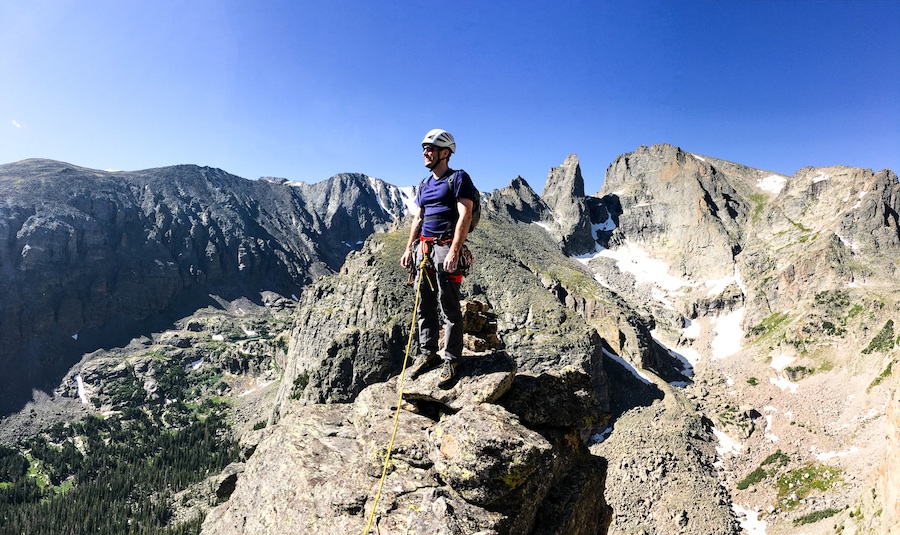 An AAI Climber enjoys the surreal summit of an alpine spire called "Zowie" after climbing the South Face (II+, 5.8+). This panoramic view looks out to Loch Vale, Sharkstooth, and the rest of RMNP. Zach Lovell
An AAI Climber enjoys the surreal summit of an alpine spire called "Zowie" after climbing the South Face (II+, 5.8+). This panoramic view looks out to Loch Vale, Sharkstooth, and the rest of RMNP. Zach LovellIntermediate Routes
Ypsilon Mountain, Blitzen Ridge (III, 5.4) Blitzen Ridge is a long and classic ridge route with magnificent exposure. This line is identified with four distinct gendarmes or “ridge towers” known as the four aces, and signifies the beginning of the route’s difficulties. Even after we’ve gained this spectacular summit, our descent will be made down the beautiful 3rd class Donner Ridge.
This program offers a spectacular adventure over a 3 day itinerary with one day of skills (or equivalent experience), one day to hike into our camp at Ypsilon Lake, and one day to climb our route/return to the trailhead. This program is recommended for fit hikers and backpackers. (3 days, minimum)
* September 5-7, 2018 Blitzen Ridge climb - 1 Space Open! *
Sharkstooth, Northeast Ridge (III, 5.6) The Northeast Ridge of Shark’s Tooth is a breathtaking objective with stellar climbing and exciting exposure. 5 pitches of moderate climbing lead adventurers up this pointy “tooth” where panoramic summit views await.
This 5-star route will require two days of skills and two days to climb the route, making for an excellent long weekend or short week. Day one of the climb will be spent hiking into the Loch Vale Cirque and spending the night beneath the stars. The second day will be spent enjoying the alpine sunrise and making a rewarding round trip to the summit and back to the car. (4 days, minimum; With previous experience, shorter trip lengths can be arranged)
Spearhead, North Ridge (III, 5.6) Glacier Gorge is one of the most stunning valleys in the west, boasting glacially carved granite and countless climbing objectives. At the heart of this valley lies the North Ridge of Spearhead, an excellent moderate ridge climb up a famous formation. Of the moderate routes in the area, the North Ridge is among the longest, with 8 pitches of quality climbing guarding the summit. This will require a minimum of two days of skills in the surrounding Estes Park Valley (or equivalent experience) and two days to climb the route. (4 days, minimum)
Advanced Routes
Petit Grepon, South Face (III, 5.8) The stunning South Face of the Petit Grepon is such an incredible route that it made the list in “Fifty Classic Climbs of North America”, a highly respected book written by Steve Roper & Alan Steck. You might feel like you’re ascending a castle’s tower, as the route gets ever steeper and narrower through 8 pitches of high quality climbing. The summit of this iconic spire is one of the best in the entire region.
Previous climbing experience is required or arrange for one of our rock skills courses prior to this program. (3 days, minimum)
Hallett Peak, Culp-Bossier (III, 5.8+) Hallett Peak, whose imposing profile has come to be almost synonymous with Rocky Mountain NP, is also home to one of Roper and Steck's "Fifty Classics", the Northcutt-Carter Route. But a massive rockfall in the late 1990's destroyed the lower part of the route, and it is now much less popular than in the past.
The Culp-Bossier route is now the standard-bearer for Hallett; steep and aesthetic, it is one of the best alpine rock objectives in the state. The route takes a striking line right up the center of the North Face, keeping climbers engaged through eight pitches – none of which is easier than 5.6 – and presenting an exposed crux high on the face. The Tyndall Gorge offers a relatively short approach to many of its climbs, making the Culp-Bossier an unparalleled one-day climb.
Previous climbing experience is required or arrange for one of our rock skills courses prior to this program. (2 days, minimum)
Very Advanced Routes
Mt. Meeker, Flying Buttress Left (III, 5.9) The razor-thin Flying Buttress of Mt. Meeker is one of the most picturesque and striking features in the park, and this 4-5 pitch route ascends directly up the arete. Alpine cragging at its best, this route can be climbed as a high-end warm-up for an ascent of the Diamond, or to add flavor to an alpine summit climb like Kiener's.
Spearhead, Syke's Sickle (III, 5.10a) Syke’s Sickle is a 7 pitch gem on one of the highest quality walls in all of Rocky Mountain National Park. The route wanders up this glacially carved face on mostly moderate terrain over a series of flakes and cracks. As climbers near the top, the 5.10a crux involves an intriguing roof slot several hundred feet above the valley floor that’s both exciting and beautiful. This route is an exceptional outing in Glacier Gorge and is a must for any avid climber.
This route is recommended as a two day program, with day one hiking into Glacier Gorge and camping. Day two will spent climbing the route, returning to camp, and finally heading back to the trailhead. (2 days, minimum)
Longs Peak, The Diamond
The Diamond is the name given to the upper portion of the East Face of Longs Peak. In many ways it is the most iconic alpine wall in the lower 48 states, topping out at 14,000 feet, and unrelentingly vertical.
For many years the Diamond was the holy grail of American rock-climbing, placed off-limits by the authorities, who feared the face would become the scene of grisly accidents. Throughout the 1950's, even as the massive monoliths of Yosemite were being climbed in multi-day efforts, the Park Service maintained a moratorium on climbing on the Diamond. Finally, with the ban lifted, a pair of Californians climbed the face over three days in August of 1960. Using big-wall and aid climbing techniques honed in Yosemite, Dave Rearick and Bob Kamps established a route known now as "D1", the precursor of the now-classic Casual Route.
The Casual Route (IV, 5.10a) Nominally a grade IV, this spectacular eight-pitch climb requires a considerable approach and a bivouac either below the lower East Face or on the Broadway ledge, which breaks the face horizontally and forms the base of the Diamond. The ascent and descent normally require a long day, plus approach, bivouac, and return hike. The climb's exposure, the quality of the rock, the views of the Mills Glacier and Chasm Lake, and the climb's position near the summit of the highest peak in northern Colorado all combine to make this one of the most sought-after climbs in the country. (3-7 days, minimum)
Ice Climbs and Mixed Alpine
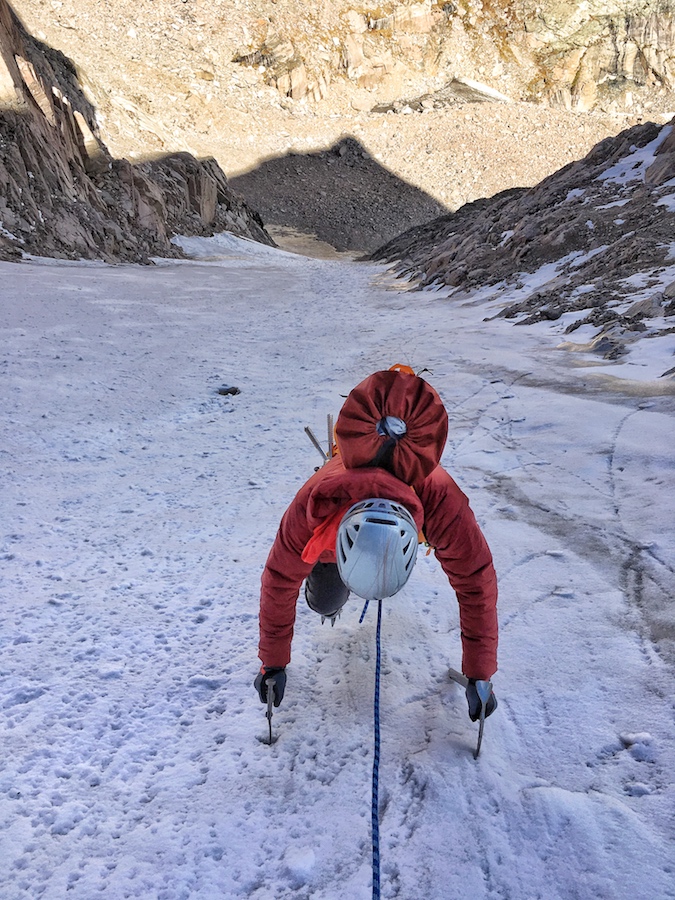
Chris charges up lamb's slide with his ice axes in high dagger position. The pointed shadow behind him is Longs' summit shadow cast on the scree 800 feet below us. Zach Lovell
There are many ice climbs and mixed alpine routes to choose from in the park. Below is a small sampling of classic climbs:
Longs Peak, Kiener’s Route (III, 5.4 Steep Snow, AI 2) The east face of Longs is an awe-inspiring and intimidating sight. The Kiener’s Route finds its way up this imposing face via an incredible yet moderate line.
Starting at Longs Peak Trailhead, climbers hike into Chasm Lake before making their way up the steep snow chute known as “Lamb’s Slide”. From here the world-class quality of this route comes into fruition as the route traverses onto the east face along a narrow ledge known as Broadway. With the Mills Glacier hundreds of feet below, the exposure is dramatic. Finally, climbers make their way towards the summit via the 4th class and low 5th class climbing on the upper east face, along the southern edge of the 1,000-foot vertical wall known as the Diamond. (4 days, minimum)
Without previous alpine climbing experience, climb this as a four-day program with two skills days and two days for the ascent. With previous climbing experience, contact us for further details.
Mt. Meeker, Dream Weaver (Alpine/Water Ice 2-3, Mixed 2-3) This couloir to the left of Mt. Meeker's Flying Buttress ascends the entire height of north aspect of the mountain from Mt. Meeker Cirque to the summit, all at a moderate difficulty. The route comes into shape sometime in the late spring and early summer. The combination of moderate but consistent climbing, direct access to Mt. Meeker's 13,911-ft summit, and a non-technical descent down the Loft Couloir, make this an outstanding adventure.
For more Water Ice and Mixed Alpine Climbs, check out the Ice Climbing and Winter Mountaineering in RMNP page!
